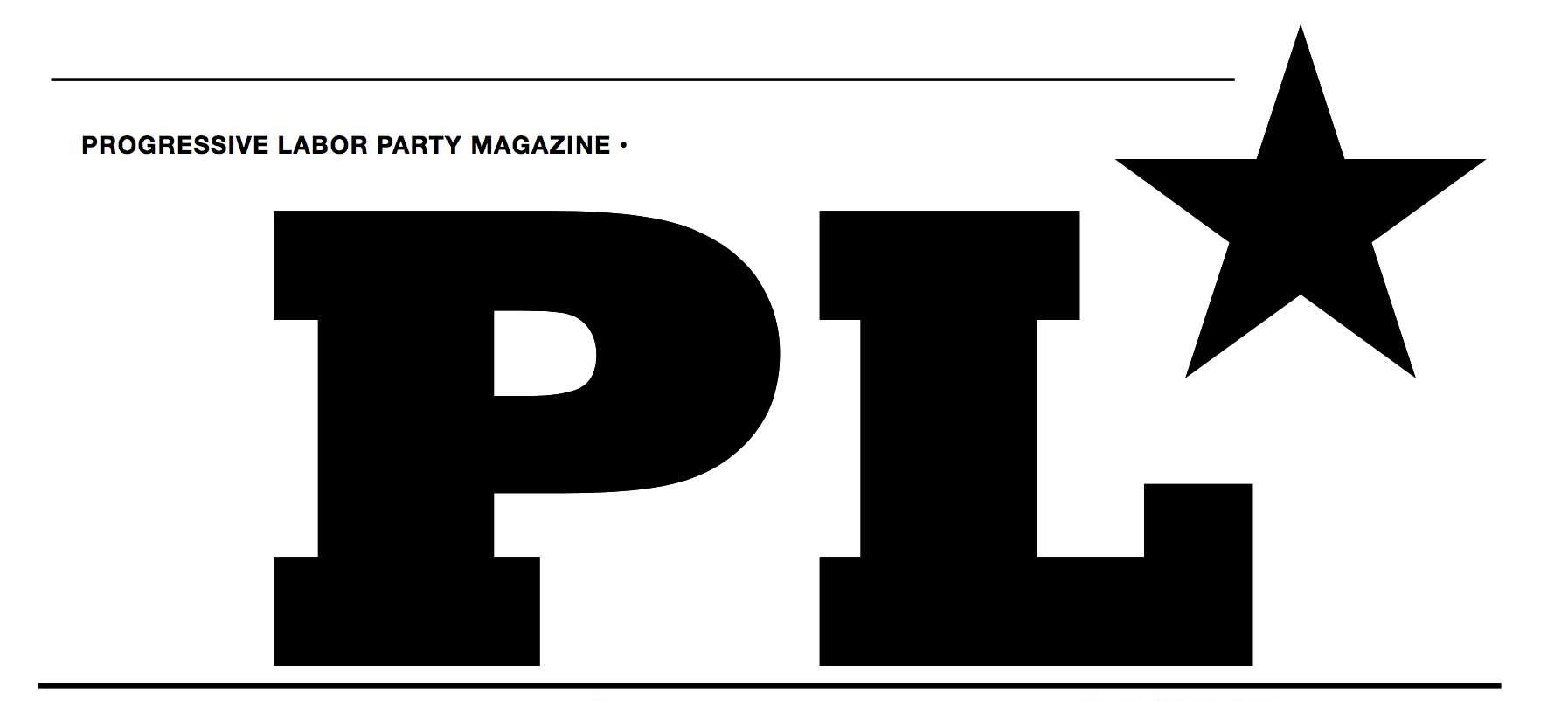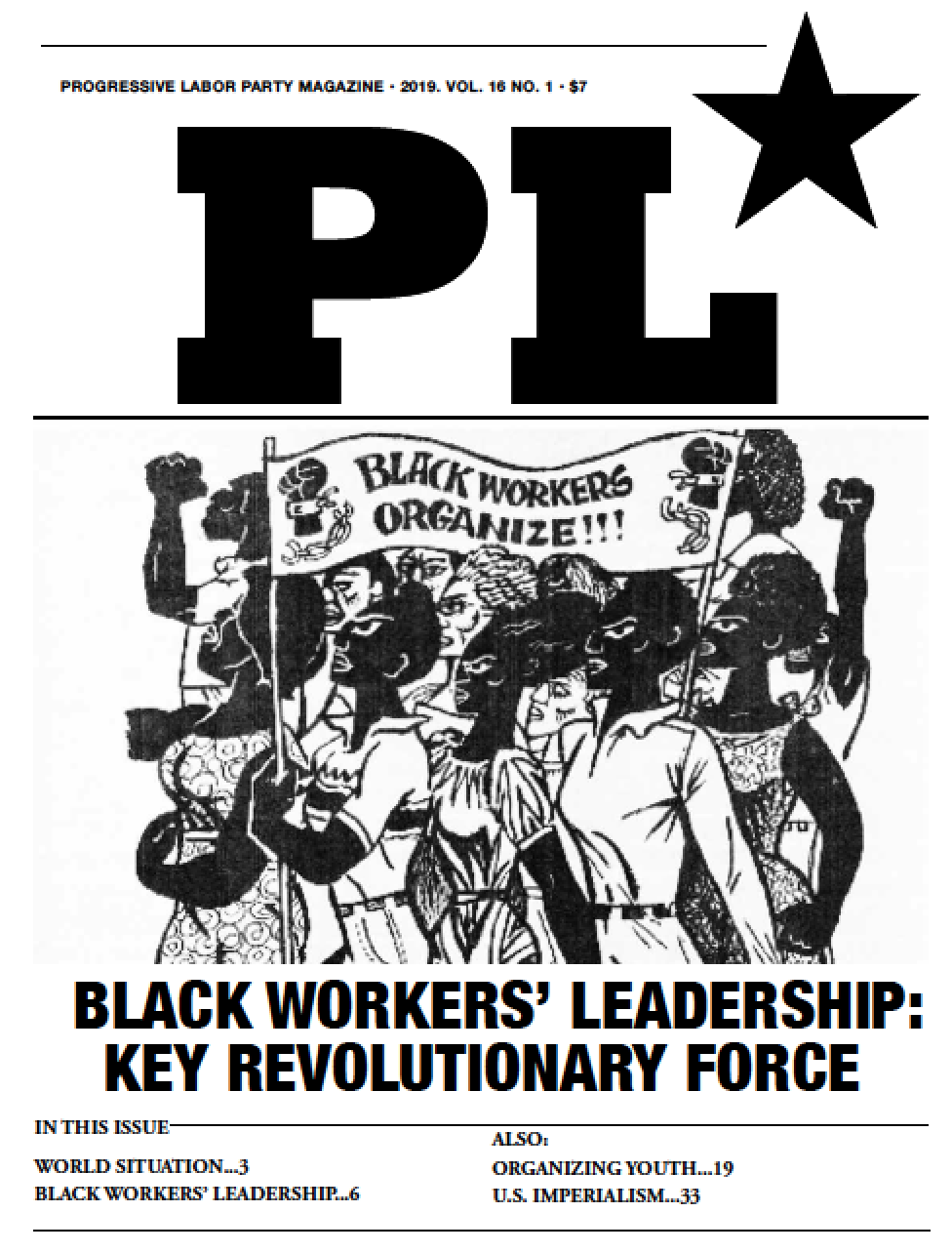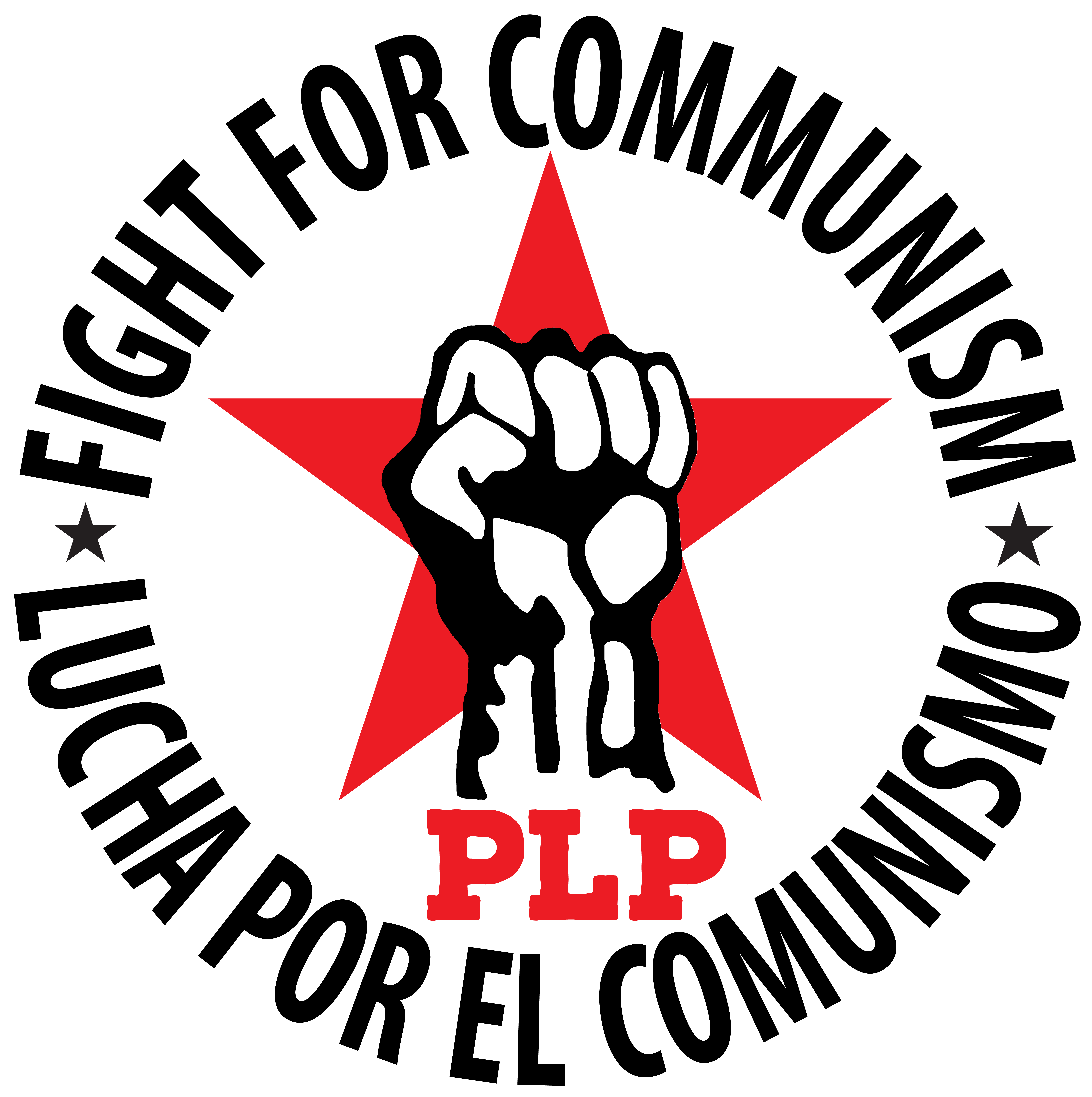When the South Side of Chicago Saw Red
 Thursday, February 23, 2017 at 9:38PM
Thursday, February 23, 2017 at 9:38PM  The following is an excerpt from Left Front, a journal put out during the early 1930s by the Chicago John Reed Club, a communist Party-led organization of radical writers and artists.
The following is an excerpt from Left Front, a journal put out during the early 1930s by the Chicago John Reed Club, a communist Party-led organization of radical writers and artists.
This article focuses on the CP's militant opposition to evictions, an opposition that rapidly gained for the communists a massive working-class base.
Since May Day, the holiday of the international working class, is less two months away, readers of CHALLENGE may be interested in taking a lesson from the boldness of the 1930s conununists in confronting (and returning) the violence of the police. Note the multiracial unity of workers, and the dead-end politics of the Black nationalists.
Note: any comments placed between brackets [ ] are interjections intended to refer places and events to the present day.
“The South Side Sees Red”
The funeral of two of the Negroes slain in the August 3rd Eviction Battle, Abe Grey and John O’Neil, was one of the largest and most impressive demon strations ever held in Chicago. Forty thousand Negroes marched in the funeral procession with twenty five thousand white workers—and a hundred thousand more, both white and black, flanked them on the line of march! The police did all in their power to break up the parade, to route street cars between the marchers, and to intimidate the spectators. But at each police tactic the marchers closed ranks, and the procession went on. From open windows and crowded fire escapes, from every available vantage point came shouts and wild applause as the line of march broke into song—The Internationale.
Following the August 3rd massacre hundreds of Negroes joined the Communist party, whilethousands entered the Unemployed Councils. Butthis apparent success was in reality a serious defeat. For the Party and the Councils did not yet have the firm organizational foundation needed before large numbers of new elements could be taken in. The new members, through their low level of political development, and the opportunistic attitude of some of them, weakened the organizations, leading to the later setbacks.
The Unemployed Councils also were to suffer later for a lack of proper direction at this crucial moment. They were fighting the charities, forcing them to give relief. They were fighting evictions. But the unemployed workers were given nothing else to fight. If the struggle of the unemployed had been tied up with their former jobs, they might have been united in mutual struggles with those who still had jobs.
But for the moment the Communist movement received a tremendous stimulus. Dearborn and Federal Streets, in the neighborhood of the massacre, became the “Red Wedding’’ of Chicago. In one block near 40th Street and Dearborn there were two Com munist Party units, a Women’s Club, an I.L.D. [International Labor Defense] branch, and an Unemployed Council. Posters announcing demonstrations and meetings covered every wall. The membership ofUn employed Council No.4 grew tobetween nine and ten thousand. [This is where the north end of Robert Taylor Homes, a huge post World War II housing project. What would PLP do if we had such a poilitical base there today!] A crew of five hundred workers roamed the streets, singing Solidarity, and looking for evictions.
The period after August 3rd, 1931, was unquestionably a new high point in the growth of the Communist movement on the South Side.
Police Try to Kill Movement Through Violence
For several months the Police kept their distance. Then, in January, 1932, the Unemployed Councils called a demonstration at the Abraham Lincoln Center Relief Station on Oakwood Boulevard.
A committee had been selected to present demands. But the police refused to let them enter the building. The leaders had expected this and had for mulated a clever plan. Before the demonstration a white member of the committee, Madden, had entered the station as a client. When he heard the militant songs of the crowd, he walked into the super visor’s office and laid the aemands on her desk. Immediately he was arrested.
Word of the arrest reached the comrades on the street. Their leaders... began speaking to the crowd, telling them of the arrest and announcing that they would rescue Madden unless he was released in ten minutes. While they were talking the police with drew into the lobby of Lincoln Center, barricading themselves behind the six large doors.
Jackson, watch in hand, said “Time’s up!”
The crowd surged forward. The police opened the doors just enough to swing at the workers with their clubs. One Negro took the club away from a police captain. The other workers beat the captain with his own club until he was groggy, when they pulled him through the door and into the middle of the crowd where he was soundly thrashed.
The captain bellowed for help. Brown Squire says then the fight started. The women and kids dashed into the alleys and dug up bricks, milk bottles and rocks, then brought them to the comrades to throw. Many workers and police were slugged. Lots of us were arrested when the riot squad got there and began shooting.
Among th comrades was Edith Miller, a white member of the Young Communist League, who was chased into a doorway, then beaten so badly that she had to be taken to the Bridewell Hospital with a fractured skull. A Negro with a cork leg was knocked unconscious during the melee at the door, but was rescued by a comrade who knocked down the policeman dragging him to a patrol wagon.
[That night thirty police with machine guns terrorized homes of suspected Party members on the South Side. At one they apprehended four youths.]
These included “Thomas, a Negro member of the Young Communist League, who had been arrested and warned before, two Jewish comrades who happened to be present, and Tony Grenot, a Negro with a light skin and curly hair whom they mistook for a Jew.
Calling the Jews filthy names and shouting, “We’ll teach you to hang around with ni**ers,” they lined the four boys up with their faces against the wall and their arms stretched above their heads.
“Then,” says Joe Jackson, “They hit ’em across the back of the head with blackjacks and butted their faces against the wall. After that they smashed the furniture into kindling wood, even tearing down the partitions. Finally they Jet the women and children go and loaded sixteen men and boys into patrol wagons.
“In the Wabash Avenue Station, that night all the police and plain clothes men in the district were called in. Then they brought the prisoners out of their cells. The officers lined up about two to three feet apart. Tony Grenot and the two white comrades were forced down the line and beaten unconscious with police clubs, while the other comrades watched. Their faces looked like bloody beef. Tony was put into the same cell with me, but by morning we had persuaded the turnkey to send him to Bridewell Hospital.”
The next day a demonstration was held at the police station to protest against the attack on the council. No one was allowed within four blocks of the station. All whites were arrested and beaten half to death [by the police]. A salesman, in the neighborhood on business, was among those beaten.
[The article goes on to show that this sort of police repression only strengthened the resolve of the Communist-led movement against racism. The movement expanded to address many issues beyond evictions and relief, and it built multiracial unity in many ways.]
Workers, Black and White, Fight Back
In January, the Negroes took a prominent part in the famous demonstration at the Japanese consulate, Tribune Tower—many were beaten by police or trampled by horses. In March an important meeting was called by the American Consolidated Trades Council, a federation of Negro unions, to lay plans for combating the open Jim Crowism of construction workers on the new Jim Crow Provident Hospital at 51st and Vincennes Avenue.
On April 27, three thousand unemployed participated in the first Stock Yards Hunger March. On May 5, two hundred Negro and white ex-service men left on the first bonus march. Hundreds of workers went with them to 119 Street, and they were presented with truckloads of food, gathered from all parts of the city. In the National Nominating Convention of the Communist Party in May, the Negro groups took a leading part. Herbert Newton of the League of Struggle for Negro Rights opened the convention.
In June 1932, a mass picket of the Provident Hospital was held under the direction of Edward L. Doty of the American Consolidated Trades Council, in protest against the Jim Crow policy of the A. F. of L. in the construction of this Jim Crow hospital.
Again, in July, another mass picket won concessions in pay and recognition of the Negro Electrical Wrokers’ Union. This picketing was supported by Negro tinsmiths, lathers, plumbers and steamfitters who were not admitted by the A.F. of L.
During the spring and summer several demonstrations were held at relief stations to demand better treatment for unemployed Negroes. During one demonstration at Lincoln Center news was brought that a family was being evicted at 37th and Indiana Avenue. Five thousand Negroes began to march to the scene of the eviction. As they passed Wendell Phillips High School some hoodlums tore a Democratic election sign from a truck. A henchman ran out of the Democratic headquarters, and began firing into the workers, shooting Madden in the shoulder. The police as usual arrested the leaders of the demonstration: Squire, Poindexter, and James Ross. Madden was rushed to the hospital at 38 and Wabash Avenue. In a short time Murphy of the Red Squad arrived and demanded that he be alowed to take Madden to the Bridewell Hospital, but the doctor refused to release the patient.
The Struggle Against Nationalism
[The article-goes on to describe a clash between communists and Garveyites (black nationalists), who competed for the attention and allegiance of workers at the open Forum in Washington Park, where hundreds of black workers would gather daily to discuss politics.]
At the Forum, trouble was brewing between the communists and the Garveyites. A back-to-Africa movement which, some years before, had for a short time won a tremendous following. One Sunday in August the Garveyites marched on the Forum, dressed in gaudy uniforms and led by a bellowing brass band. Three times they marched around the Forum, as Joshua did at Jericho. Then they demanded that the Forum be turned over to them.
[News then came in of an eviction being carried on at] a house owned by a woman Garveyite at 41st and St. Lawrence Avenue. The family and neighbors appealed to the Unemployed Council for aid in replacing the furniture. When the Council arrived, they armed resistance from Garveyites, stationed with revolvers in the house and adjoining and backed up by the police. [Note. whose side these nationalists were on!] Afterwards it was found that hundreds of Garveyites had come in trucks and cars from Indiana for this battle.
That night 1,200 workers were mobilized at the Forum. Many wanted to go right out, then and there, and mop up the Garveyites, but the communist leaders knew that such a fight would result in a massacre of workers. They suggested instead a demonstration the next day at the scene of the eviction. A steering committee was elected....A few brave workers were assigned to guard the furniture during the night.
At nine the next morning a tremendous aggregation of from 15,000 to 20,000 people gathered at 41 Street and St. Lawrence.... [A committee was elected on the spot; it carried the demonstration’s demands to the local relief station, where a new home-was secured for the evicted family, and the rent was paid by the relief agency.]
Victorious, the committee returned to the demonstration. Following their report, [members of the Council] spoke, pointing out the role of the Unemployed Council and explaining how mass pressure had gained this victory. Then the furniture was loaded on the truck and moved to the new home.
[We can clearly see that the workers of Chicago have a long history of multiracial unity. But capitalist schools ignore this history. The school bosses don’t want youth to Jearn how to fight back from our forefathers. It’s up to PLP teachers and students to bring this history to workers and youth.]J





 Progressive Labor Party (PLP) fights to destroy capitalism and the dictatorship of the capitalist class. We organize workers, soldiers and youth into a revolutionary movement for communism.
Progressive Labor Party (PLP) fights to destroy capitalism and the dictatorship of the capitalist class. We organize workers, soldiers and youth into a revolutionary movement for communism.




Reader Comments